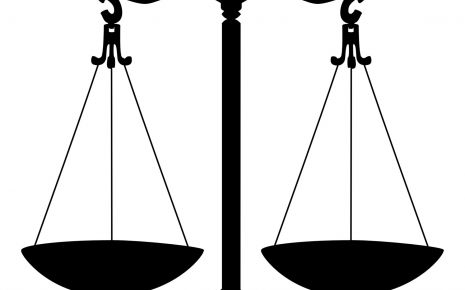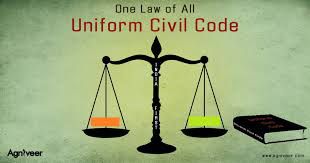Rules Of Interpretation Of Statues
When a legal situation arises that the statute does not clearly address, the
courts are given the essential responsibility of interpreting the relevant
statute or law. Failure to do so might result in ambiguity and a superficial
application of the law. In order to properly interpret the law, courts apply
their analytical reasoning and due diligence to determine the legislative
intent.
The purpose of the law's passage by the legislature aids the court in interpreting it. The intent of the legislation is to be seen from very wide perspective and many points it needed to be considered such as reason for legislation, object and purpose of legislation, priority area of legislation, class of people on which legislation must be applied. The intention behind the legislature in passing the law can be the determining factor in proper interpretation of the law.
In Pitches v. Kenny, it was said that:
"The object of an Act and its intent, meaning and spirit can only be ascertained from the term of the Act itself." In finding the intent of legislation the court must find natural meaning of the word used in the legislation and what is overall context and scope of the word occur in the legislation and any other phrase in the legislation which can throw light to the fact.
Simply said, interpretation is the process of explaining or translating any written law or document. To determine the true meaning of a law or statute's language and provisions, interpretation is applied.
By identifying the genuine purpose of the legislators, the courts can correct the public's perception of the law through the process of statutory interpretation. It is the responsibility of the court to execute the laws in public correctly and without any mistakes, therefore understanding the true intent behind each legislation becomes crucial. The judiciary can apply a variety of interpretation rules to make the law more understandable. Normally, when there is a contradiction in the law, the judge attempts to interpret it literally. However, there are situations when applying a statute's literal meaning is insufficient to understand the legislature's genuine intentions.
Interpretation, according to an old jurist named Salmond, is the procedure employed by the court to comprehend the meaning of a law that has been supplied by the legislature through the use of the legislation's authorised forms of expression.
Application of the norms of interpretation to determine the true intention of the legislature is known as the authority form.
The law or statute must be uniform, certain and predictable.
According to Keeton, he said that function of judges related to interpretation includes:
Need For Rules Of Interpretation Of Statutes:
The legal system depends on the interpretation of legislation because it assures that the law is applied consistently, predictably, and fairly. It clarifies the rights, obligations, and responsibilities of people, businesses, and governmental institutions under the law and aids in setting legal precedents and principles that direct subsequent cases.
Imperfection of Language:
When there is any imperfection in the language, it occasionally happens that the language of no is not obvious. The rule of interpretation is applied to resolve these uncertainties and flaws.
Language may not signify the intention:
It's likely that the language used to create a legislation may not always clarify or represent the intentions of its authors. It's also feasible that the law was enough at the time it was passed, given the circumstances. But as new scenarios happen frequently nowadays, the law must now be clarified and interpreted to account for these circumstances.
Multiple Interpretations offer law:
The interpretation is crucial in situations where the legislation has more than one meaning.
Different circumstances while making law:
Humans with specialised legal knowledge create the laws. The law was created at the time based on the time and circumstances at the time. However, no human can create a law that may also address issues that may develop in the future. Therefore, since the laws put into place by their founders are currently insufficient, we need to interpret the law.
Law is not covering the specific area:
Sometimes laws fail to encompass all the circumstances in which they ought to be applied. Therefore, anytime an issue regarding or a law prohibiting such areas occurs, we use the interpretation of statutes to close these gaps.
Error in the drafting of the Law:
It is possible to have a conversation without having sufficient knowledge of the topic on which the law is based. Drafting errors may occur due to a lack of resources and terminology, making the law murky and requiring interpretation.
Rules are not complete:
It has been seen in numerous statutes that the laws created by legislation were lacking. In order for such laws to be properly applied, further rules and regulations must be added. The judiciary fills in any gaps in the laws' provisions for rules and regulations.
These are a few circumstances where it is required to interpret the law. The judge has a responsibility to clarify these misunderstandings and close the loophole in accordance with the legislature's actual meaning.
Principle Of Interpretation Of Statutes:
The courts are crucial in giving meaning to statutes and interpreting them in a way that makes them applicable and practical. The administration of equal justice would be hampered and there would be a variety of interpretations if the courts used their interpretive authority arbitrarily. Over time, the Courts established specific principles and guidelines for the interpretation of statutes, which they have utilised on numerous occasions to ensure uniformity.
The fundamental rule is that all provisions should be construed in accordance with grammatical rules since whatever the legislature's aim was when it made a provision, it was communicated through words. The goal of the legislator can be inferred from the words and language used, making it the safest guideline for interpreting statutes.
This rule states that the court has no obligation to consider potential repercussions if the text of the act is clear and that its only responsibility is to give effect to it. The court's only duty is to explain the law exactly as it stands; if any harsh repercussions occur, the legislature will seek out a solution and keep an eye out for it.
In the case of Tata Consultancy Services v. State of A.P. (2005) 1 SCC 308, it was held that:
"A literal construction shouldn't be rejected just because following it would incur penalties. The courts shouldn't be overzealous in their search for murky or unclear language."
The following circumstances must be taken into account in order to understand the literal rule:
This rule makes the interpretation process somewhat constrained and rigid in its most basic form. The notion that words have stable meanings is another reason for criticism of this rule, as a single word might have several meanings based on the various circumstances in which it is used.
According to the ruling in the Heydon case, there are four requirements that must be met for a genuine and certain interpretation of all statutes in general:
Pyare Lal V. Ram Chandra, The defendant in this case was charged with selling sweetened supari that had been sweetened with an artificial sweetener. He was charged with violating the Food Adulteration Act. Pyare Lal asserted that supari is not a food item. According to the court, the dictionary definition is not always accurate, so the mischief rule must be used and the interpretation that best serves the remedy must be taken into account. The court concluded that the term "food" is one that can be consumed orally and by mouth. His prosecution was deemed to be lawful as a result.
The mischief rule and the literal rule are reconciled by the golden rule. Generally, it gives words their plain and ordinary meaning but permits exceptions when closely following to the literal meaning would result in an absurd result that would be against the legislative aim.
In instances of homographs, where a term has more than one meaning, the judge may choose to use that meaning. The judge can also give a word an entirely other meaning if using it will lead to an unfavourable decision even though it only has one meaning.
Both a limited and general use of the golden rule are possible. When the rule is used with uncertain words, narrow use results. The rule is most frequently used in this way. When the rule is used to prevent results that are against public policy, it is widely used.
In the case of CIT v. Hindustan Bulk Carriers AIR 2002 SC 3941, the Supreme Court stated:
"Courts must avoid direct conflict between seemingly contradictory provisions and must interpret them in a way that harmonises them."
Conclusion:
Statutory interpretation guidelines are essential for ensuring that the law is applied consistently and effectively. The Mischief Rule seeks to determine the legislators' intent by filling in the legal gaps left by prior legislation, whereas the Literal Rule focuses the plain sense of words. The flexibility offered by the Golden Rule allows for deviation from its literal application in order to prevent ludicrous results.
Finally, the Rule of Harmonious Construction unifies provisions that are in conflict in order to achieve the overall goal of the statute. Courts work to promote the ideals of justice, fairness, and the efficient operation of the legal system by applying these norms.
References:
The purpose of the law's passage by the legislature aids the court in interpreting it. The intent of the legislation is to be seen from very wide perspective and many points it needed to be considered such as reason for legislation, object and purpose of legislation, priority area of legislation, class of people on which legislation must be applied. The intention behind the legislature in passing the law can be the determining factor in proper interpretation of the law.
In Pitches v. Kenny, it was said that:
"The object of an Act and its intent, meaning and spirit can only be ascertained from the term of the Act itself." In finding the intent of legislation the court must find natural meaning of the word used in the legislation and what is overall context and scope of the word occur in the legislation and any other phrase in the legislation which can throw light to the fact.
Meaning Of Interpretation
The Latin word "Interpretari" is the source of the English word "interpretation," which meaning to explain, comprehend, or translate.Simply said, interpretation is the process of explaining or translating any written law or document. To determine the true meaning of a law or statute's language and provisions, interpretation is applied.
By identifying the genuine purpose of the legislators, the courts can correct the public's perception of the law through the process of statutory interpretation. It is the responsibility of the court to execute the laws in public correctly and without any mistakes, therefore understanding the true intent behind each legislation becomes crucial. The judiciary can apply a variety of interpretation rules to make the law more understandable. Normally, when there is a contradiction in the law, the judge attempts to interpret it literally. However, there are situations when applying a statute's literal meaning is insufficient to understand the legislature's genuine intentions.
Interpretation, according to an old jurist named Salmond, is the procedure employed by the court to comprehend the meaning of a law that has been supplied by the legislature through the use of the legislation's authorised forms of expression.
Application of the norms of interpretation to determine the true intention of the legislature is known as the authority form.
The law or statute must be uniform, certain and predictable.
According to Keeton, he said that function of judges related to interpretation includes:
- Rectangle: Rounded Corners: A Judge has to decide the exact meaning of the legislature which is actually said.
- Rectangle: Rounded Corners: He must find out the real intention of the legislature to say that word.
- Legal action in the public interest was brought before the Allahabad High Court. The Allahabad High Court applied its interpretation of article 25 of the Indian Constitution to this PIL.
Need For Rules Of Interpretation Of Statutes:
The legal system depends on the interpretation of legislation because it assures that the law is applied consistently, predictably, and fairly. It clarifies the rights, obligations, and responsibilities of people, businesses, and governmental institutions under the law and aids in setting legal precedents and principles that direct subsequent cases.
- Imperfection of Language
- Language may not signify the intention
- Multiple Interpretations offer law
- Different circumstances while making law
- Law is not covering the specific area
- Error in the drafting of the Law
- Rules are not complete
Imperfection of Language:
When there is any imperfection in the language, it occasionally happens that the language of no is not obvious. The rule of interpretation is applied to resolve these uncertainties and flaws.
Language may not signify the intention:
It's likely that the language used to create a legislation may not always clarify or represent the intentions of its authors. It's also feasible that the law was enough at the time it was passed, given the circumstances. But as new scenarios happen frequently nowadays, the law must now be clarified and interpreted to account for these circumstances.
Multiple Interpretations offer law:
The interpretation is crucial in situations where the legislation has more than one meaning.
Different circumstances while making law:
Humans with specialised legal knowledge create the laws. The law was created at the time based on the time and circumstances at the time. However, no human can create a law that may also address issues that may develop in the future. Therefore, since the laws put into place by their founders are currently insufficient, we need to interpret the law.
Law is not covering the specific area:
Sometimes laws fail to encompass all the circumstances in which they ought to be applied. Therefore, anytime an issue regarding or a law prohibiting such areas occurs, we use the interpretation of statutes to close these gaps.
Error in the drafting of the Law:
It is possible to have a conversation without having sufficient knowledge of the topic on which the law is based. Drafting errors may occur due to a lack of resources and terminology, making the law murky and requiring interpretation.
Rules are not complete:
It has been seen in numerous statutes that the laws created by legislation were lacking. In order for such laws to be properly applied, further rules and regulations must be added. The judiciary fills in any gaps in the laws' provisions for rules and regulations.
These are a few circumstances where it is required to interpret the law. The judge has a responsibility to clarify these misunderstandings and close the loophole in accordance with the legislature's actual meaning.
Principle Of Interpretation Of Statutes:
The courts are crucial in giving meaning to statutes and interpreting them in a way that makes them applicable and practical. The administration of equal justice would be hampered and there would be a variety of interpretations if the courts used their interpretive authority arbitrarily. Over time, the Courts established specific principles and guidelines for the interpretation of statutes, which they have utilised on numerous occasions to ensure uniformity.
The Literal Or Grammatical Rule
It is the initial interpreting principle. The terms used in this book are to be presented or construed in accordance with this guideline in order to preserve their natural or ordinary sense. After the interpretation, if the meaning is entirely apparent and unambiguous, the effect of a statute's provision shall be given, regardless of any potential repercussions.The fundamental rule is that all provisions should be construed in accordance with grammatical rules since whatever the legislature's aim was when it made a provision, it was communicated through words. The goal of the legislator can be inferred from the words and language used, making it the safest guideline for interpreting statutes.
This rule states that the court has no obligation to consider potential repercussions if the text of the act is clear and that its only responsibility is to give effect to it. The court's only duty is to explain the law exactly as it stands; if any harsh repercussions occur, the legislature will seek out a solution and keep an eye out for it.
In the case of Tata Consultancy Services v. State of A.P. (2005) 1 SCC 308, it was held that:
"A literal construction shouldn't be rejected just because following it would incur penalties. The courts shouldn't be overzealous in their search for murky or unclear language."
The following circumstances must be taken into account in order to understand the literal rule:
- The act must contain a section on terminology interpretation that specifies special definitions for each term (i.e., the definition sections).
- Technical terms should be understood in their conventional technical senses if the statute does not offer precise definitions.
- It is improper to introduce words through implications.
- Words can change in meaning throughout time.
- It should be acknowledged that words gain meaning from their surroundings.
This rule makes the interpretation process somewhat constrained and rigid in its most basic form. The notion that words have stable meanings is another reason for criticism of this rule, as a single word might have several meanings based on the various circumstances in which it is used.
The Mischief Rule
In Heydon's case in 1584, the Mischief Rule was developed. Because the goal of this statute is paramount for implementing this rule, it is known as the rule of purposive construction. Because Lord Poke imposed it in Heydon's case in 1584, it is referred to as Heydon's rule. Because the emphasis is on preventing trouble, it is known as the "mischief rule."According to the ruling in the Heydon case, there are four requirements that must be met for a genuine and certain interpretation of all statutes in general:
- What was the common law prior to an act being made.
- What wrongdoing caused the current statute to be passed.
- What remedy the Parliament sought or had resolved and appointed to treat the commonwealth's illness.
- The real reason for the remedy.
Pyare Lal V. Ram Chandra, The defendant in this case was charged with selling sweetened supari that had been sweetened with an artificial sweetener. He was charged with violating the Food Adulteration Act. Pyare Lal asserted that supari is not a food item. According to the court, the dictionary definition is not always accurate, so the mischief rule must be used and the interpretation that best serves the remedy must be taken into account. The court concluded that the term "food" is one that can be consumed orally and by mouth. His prosecution was deemed to be lawful as a result.
The Golden Rule
The "British Rule," often known as the golden rule, allows for some latitude in the interpretation process by allowing words to be used in ways other than their exact meaning in order to prevent ludicrous results. In other words, this rule allows a judge to deviate from a word's usual meaning when doing so would result in an absurd outcome.The mischief rule and the literal rule are reconciled by the golden rule. Generally, it gives words their plain and ordinary meaning but permits exceptions when closely following to the literal meaning would result in an absurd result that would be against the legislative aim.
In instances of homographs, where a term has more than one meaning, the judge may choose to use that meaning. The judge can also give a word an entirely other meaning if using it will lead to an unfavourable decision even though it only has one meaning.
Both a limited and general use of the golden rule are possible. When the rule is used with uncertain words, narrow use results. The rule is most frequently used in this way. When the rule is used to prevent results that are against public policy, it is widely used.
Rule Of Harmonious Construction
When two or more statutes or various sections of a single statute dispute, the principle of harmonic construction is used. According to this rule, if there is a contradiction between two laws, the conflicting provisions should be reconciled to the greatest extent practicable. The rule is founded on the idea that every statute should be considered as a whole, with provisions being consistently interpreted, because each one has a function. Unless there is a means to reconcile the disparities, interpretation shouldn't make any provision meaningless or utilise one provision to defeat another.In the case of CIT v. Hindustan Bulk Carriers AIR 2002 SC 3941, the Supreme Court stated:
"Courts must avoid direct conflict between seemingly contradictory provisions and must interpret them in a way that harmonises them."
Conclusion:
Statutory interpretation guidelines are essential for ensuring that the law is applied consistently and effectively. The Mischief Rule seeks to determine the legislators' intent by filling in the legal gaps left by prior legislation, whereas the Literal Rule focuses the plain sense of words. The flexibility offered by the Golden Rule allows for deviation from its literal application in order to prevent ludicrous results.
Finally, the Rule of Harmonious Construction unifies provisions that are in conflict in order to achieve the overall goal of the statute. Courts work to promote the ideals of justice, fairness, and the efficient operation of the legal system by applying these norms.
References:
- Maxwell's Interpretation of Statute
- Literally Interpretation the Law - An Appraisal of the Literal Rule of Interpretation of Statutes
- Interpretation of Statutes: A Complete Study of Aids to Interpretation
Law Article in India
Legal Question & Answers
Lawyers in India - Search By City
LawArticles
How To File For Mutual Divorce In Delhi

How To File For Mutual Divorce In Delhi Mutual Consent Divorce is the Simplest Way to Obtain a D...
Increased Age For Girls Marriage

It is hoped that the Prohibition of Child Marriage (Amendment) Bill, 2021, which intends to inc...
Facade of Social Media

One may very easily get absorbed in the lives of others as one scrolls through a Facebook news ...
Section 482 CrPc - Quashing Of FIR: Guid...

The Inherent power under Section 482 in The Code Of Criminal Procedure, 1973 (37th Chapter of t...
The Uniform Civil Code (UCC) in India: A...

The Uniform Civil Code (UCC) is a concept that proposes the unification of personal laws across...
Role Of Artificial Intelligence In Legal...

Artificial intelligence (AI) is revolutionizing various sectors of the economy, and the legal i...








Please Drop Your Comments